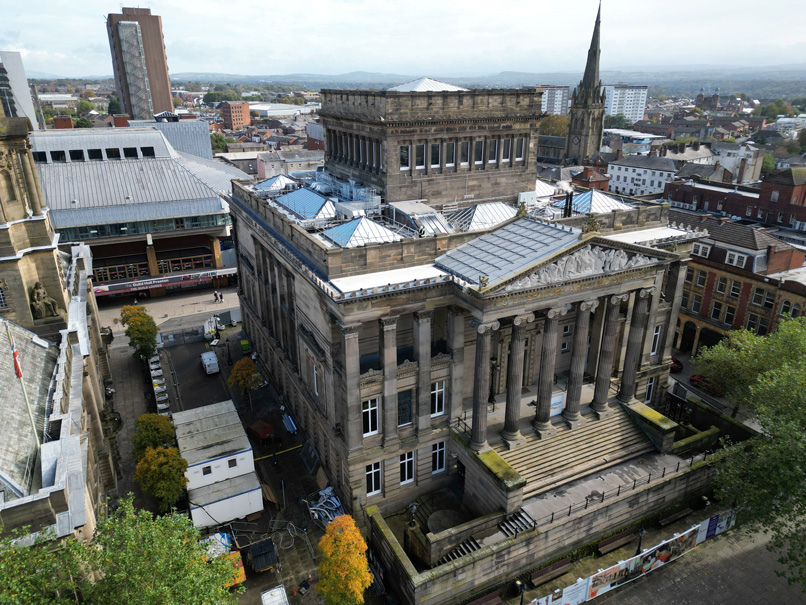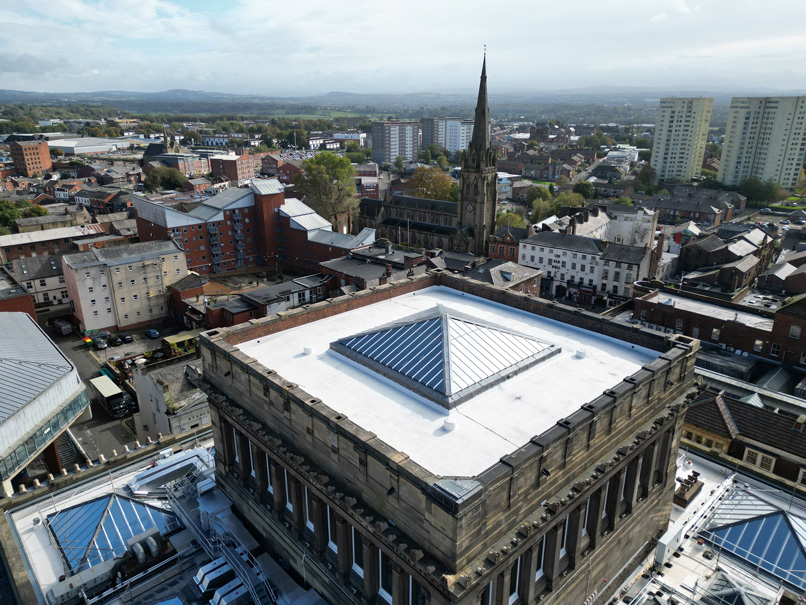The ‘Heritage Project of the Year’ at the Mastic Asphalt Council (MAC) Awards 2025 was The Harris completed by MAC contractor member NRA Roofing and Flooring Services.
The Harris is a Museum, Art Gallery and Library in the heart of Preston. Mastic asphalt was used for the sympathetic restoration of the 130-year-old Grade I listed building to ensure its preservation for future generations.
 A cherished cultural institution, the roof refurbishment was carried out as part of the £16 million ‘Harris Your Place’ project which is designed to restore and reimagine the Harris for 21st-century audiences as a cultural learning space. It is one of the most ambitious cultural projects in the North of England with the aim of securing the future of the Harris and relevance for the next 100 years.
A cherished cultural institution, the roof refurbishment was carried out as part of the £16 million ‘Harris Your Place’ project which is designed to restore and reimagine the Harris for 21st-century audiences as a cultural learning space. It is one of the most ambitious cultural projects in the North of England with the aim of securing the future of the Harris and relevance for the next 100 years.
The Harris owes its name to Edmund Harris, a Preston lawyer who left £300,000 in his will to establish a trust and support a public Library, Museum and Art Gallery. The building was designed by local architect James Hibbert who chose a Neo-Classical style and it officially opened in 1893.
The Harris was granted £4.5m from the National Lottery Heritage Fund for the once-in-a-generation remodelling and refurbishment project, from the roof to the basement and everywhere in between.
Renovation work was carried out over a three-year period and as part of this, over 100,000 collection objects were removed from the building and placed into safe storage. The main contractor for the project was Conlon Construction and NRA Roofing and Flooring Services carried out the roof refurbishment.
Mastic asphalt was chosen for the roof refurbishment at the Harris, as like many heritage buildings, it was originally protected with asphalt. NRA Roofing and Flooring Services stripped the roof back to its original concrete deck and re-roofed the structure with a system comprising two coats of mastic asphalt backed with a 20 year warranty. Totalling an area comprising 950m², two coats of solar reflective white paint were applied to the top surface to provide additional UV protection.
 This was a fantastic example of recycling and sustainability in action as the existing mastic asphalt was taken up and reused. A total of 55 tonnes of mastic asphalt was stripped up and 55 tonnes of asphalt was put back.
This was a fantastic example of recycling and sustainability in action as the existing mastic asphalt was taken up and reused. A total of 55 tonnes of mastic asphalt was stripped up and 55 tonnes of asphalt was put back.
There were some highly challenging logistical issues to overcome during the roof refurbishment which was carried out over an 18-week period. With no crane, all the stripped up and new mastic asphalt was lifted via hoist. NRA Roofing and Flooring Services also had to deal with some tricky detail work due to mechanical and engineering plant on the roof.
Craig Chaplin, Director of NRA Roofing and Flooring Services said: “This was an extremely challenging project logistically, but the finished result looks fantastic. Mastic asphalt was ideal as it is so hard-wearing and enabled other trades such as scaffolding to work at the same time as we were re-roofing the building. We’re proud to have played a key part in this historic project.”
Following the refurbishment, The Harris reopened in September 2025. What makes mastic asphalt so appealing for heritage projects – from local restorations to maintaining internationally renowned buildings – is its suitability, performance and appearance, which is in keeping with the stonework of these prestigious structures. More faithful to tradition than virtually any other roofing system, modern polymer modified mastic asphalt provides a far more effective waterproofing material.
One of the most renowned heritage applications of mastic asphalt can be found at London’s St Paul’s Cathedral. Mastic asphalt was first laid in 1906 on the Stone Gallery that circles the Cathedral dome and it provided a remarkable 111 years’ weatherproof protection before it required refurbishment by MAC contractor member Sussex Asphalte.
Buckingham Palace, the Houses of Parliament and the Bank of England all have mastic asphalt roofs that have lasted for more than 100 years. Although mastic asphalt is renowned for use on heritage buildings, it is equally likely to be found on modern buildings, especially town centre and large shopping centre developments built using traditional construction methods. Both Bluewater in Kent and Birmingham’s Bullring have mastic asphalt roofs.
This article featured within RCi Magazine’s Traditonal Roofing Supplement in November 2025 – click here to view the article.
